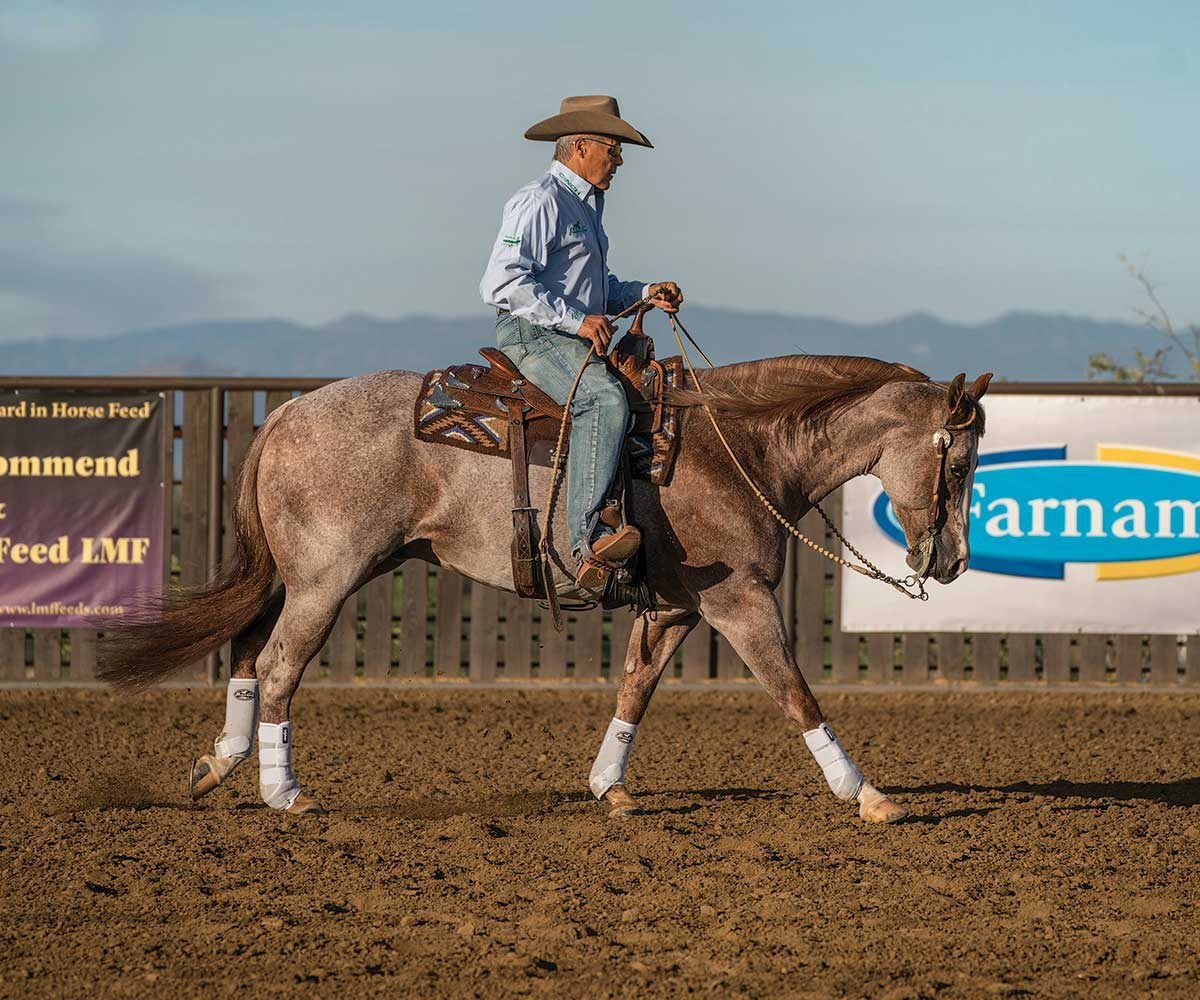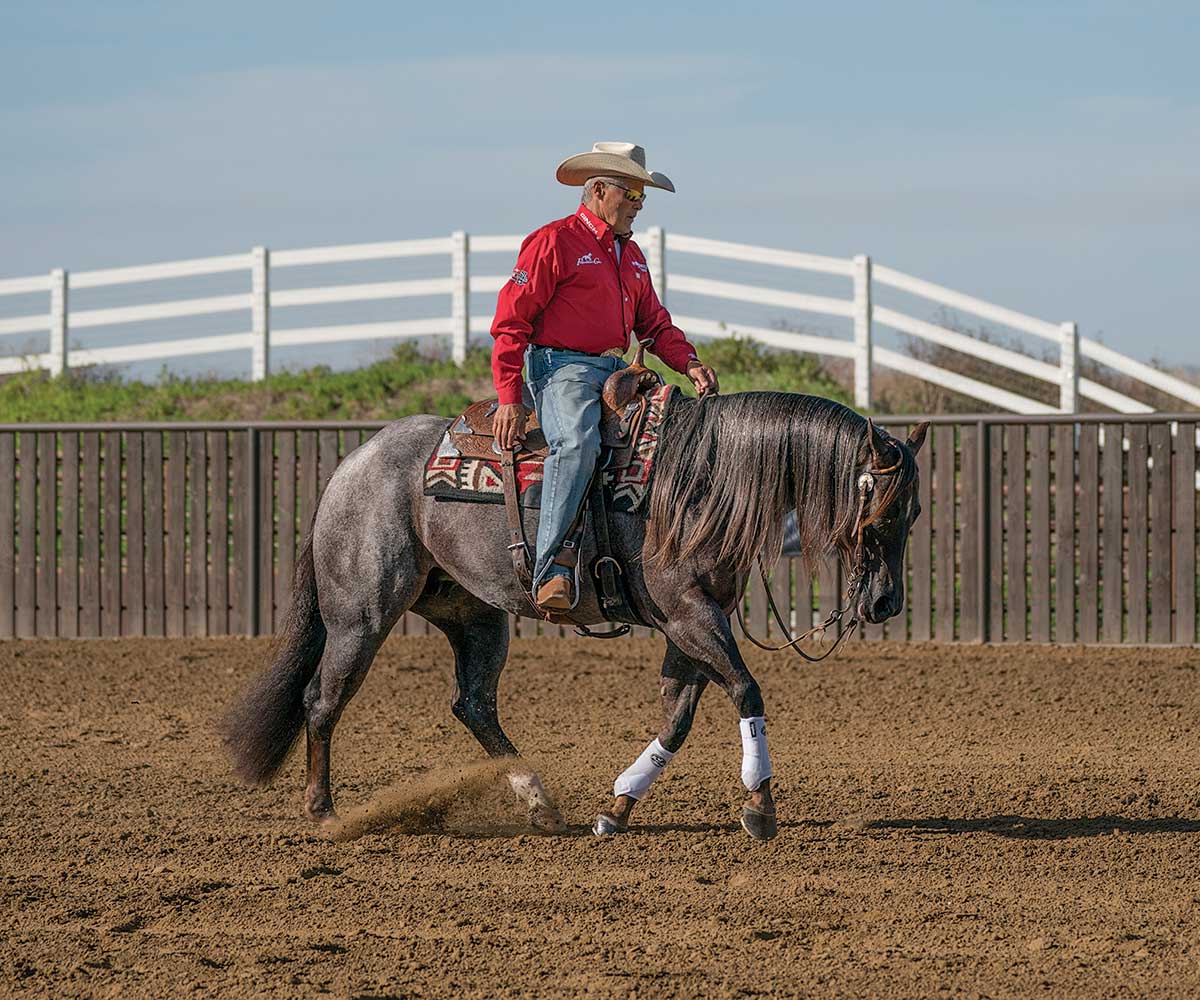You can walk around just about any horse show and hear people talk about which horses they don’t like watching, and quite often it involves discussion of how the horses carry their heads. From the Western pleasure pen to the reining arena, headset is a controversial topic that sets off many heated discussions.
But the fact is, it doesn’t have to. By considering these three factors, you can form an opinion rather than make a sweeping generalization based on an event’s name. Each of the horses here compete in a variety of events, including reining, ranch riding, working cow horse, and roping. They each pack their necks and heads differently and can illustrate the three factors to think about when forming a headset opinion based on a horse—not bias against an event.



Comfort Level
Is the horse comfortable packing his head where it’s at? Or is it forced? A horseman can watch and determine which is the case. Watch the horse on a longe line, and notice where he carries his head and neck without a rider. This is why horse buyers put colts in round pens when considering a purchase. The horse will carry his head and neck—and the rest of his body—the way he’s most comfortable when he’s at liberty in a round pen.
Horses 1, 2, and 3 shown here have different comfort levels when it comes to head carriage. Horse 1 has the highest natural headset. He’s being ridden in romal reins, which inherently bring a more upright body position. He packs his head and neck just above level, which is perfect for his events, including roping and working cow horse. Compare Horse 2’s level neck carriage with the fence line; they’re almost even. With the reins draped, he’s free to pack his head how he chooses. Horse 3 carries her head low no matter the situation—with a rider, on the longe line, and even when she’s turned out in the pasture. It’s where she’s comfortable and ties to her conformation (discussed later). I can ride her without a bridle, and her head and neck carriage don’t change.
If you have a horse that’s comfortable somewhere and let him go that way, he’ll do his job better.
Breeding
During the last 25 to 30 years of breeding horses, we’ve taken performance mounts down a genetic pathway that favors the naturally lower-headed horse. Mares and studs that naturally pack their heads and necks lower—and are built to do so—are chosen by breeders over those horses that don’t naturally move in that way. For each resulting foal, that head carriage becomes a stronger genetic trait. You might say, “When I was a kid, my horse’s head wasn’t like that.” You’re right. We were still working toward breeding them for the way modern horses travel.
The imitators—riders with horses that aren’t bred or built in this manner but try to force it—are where the problem lies. Instead of working with what they have, these riders force a style of head carriage that their horses aren’t built for nor bred to travel in that manner.
Conformation
A horse’s build plays a role in his head carriage. It’s form to function.
Each horse here has slightly uphill conformation. That means each horse’s withers are marginally higher than the point of their croup. This allows them to drive from behind and propel themselves forward with collection, packing their heads and necks where it’s comfortable. Conversely, a horse built downhill struggles with hind-end impulsion and thus comfortable head carriage. He must pull himself forward and elevate his head and neck with every stride.
A horse’s neck length also plays a role in how he carries it. Horse 1’s neck is shorter than the other two shown here, and he packs his head and neck the most different from the other two. Horse 2 and 3 have longer necks that are more comfortable hanging lower because of where they tie into the horses’ bodies. Horse 3’s longer neck moves her balance point forward, leading her to low neck carriage and holding her face behind the vertical. If either of these horses’ long necks came out the tops of their chests, they wouldn’t carry their heads in this way.
Make Your Own Call
Sometimes as horsemen we have to think outside our comfort zones. I love watching good dressage horses. I don’t compete in dressage or train for that event, but I’ve taken time to understand what it entails and appreciate watching a good dressage mount. If you don’t understand something, learn about it. Ask “why?” before deciding if something is natural or forced. Then make your decision.
Bob Avila, Temecula, California, is an AQHA world champion, three-time NRCHA Snaffle Bit Futurity winner, NRHA Futurity champ, and two-time World’s Greatest Horseman. He’s been named the AQHA Professional Horseman of the Year. Learn more at bobavila.net.

